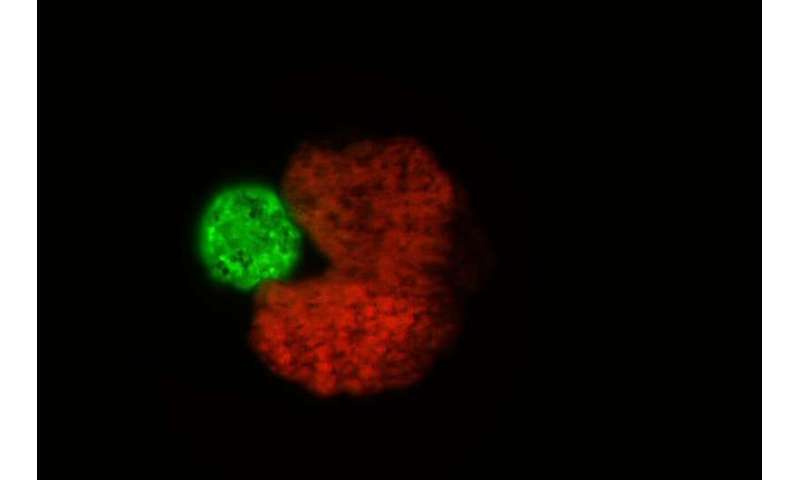Best of Last Week – New dinosaur species, living robots that reproduce, protection afforded by people wearing masks

It was a good week for biological science, as a team at Universidad de Chile, discovered a new dinosaur species with a unique slashing tail. About the size of a dog, it had seven pairs of "blades" positioned sideways like a slicing weapon. And a team with members from several institutions in the U.S. and Canada found that ocean plastic is creating new communities of life on the high seas, most specifically in the North Pacific Subtropical Gyre, aka the "Great Pacific Garbage Patch." Also, unfortunately, a team with members from the University of Copenhagen and the Norwegian University of Science and Technology found that the Norwegian wolf has gone extinct. The wolves now living in Norway are all Finnish, the team found, as part of the largest genetic study of wolves done in the world.
In technology news, a team with members from Tufts University, Harvard University and the University of Vermont built what they described as the first living robots that can reproduce. Called xenobots, the Pac-Man-shaped robots can mass together and create new baby bots. Also, a combined team from Ruhr-Universität Bochum and Niederrhein University of Applied Sciences identified 14 new types of attacks on web browsers. And a team at the University of Edinburgh developed an artificial-neural-network-based model that can automatically generate film trailers. Also, a team at MIT developed a machine-learning model that could one day allow robots to understand interactions the ways humans do.
In other news, Stephane Bancel, CEO of Moderna, told the press that existing COVID-19 inoculations will struggle against the fast-spreading omicron variant. A team at the University of California, Davis announced that they had developed a jelly-like type of ice cube that does not melt or grow mold.
And finally, a team at Max Planck Institute for Dynamics and Self-Organization found that three meters between people is not enough distance to prevent infection, but if both people wear masks, the risks drop dramatically.
© 2021 Science X Network